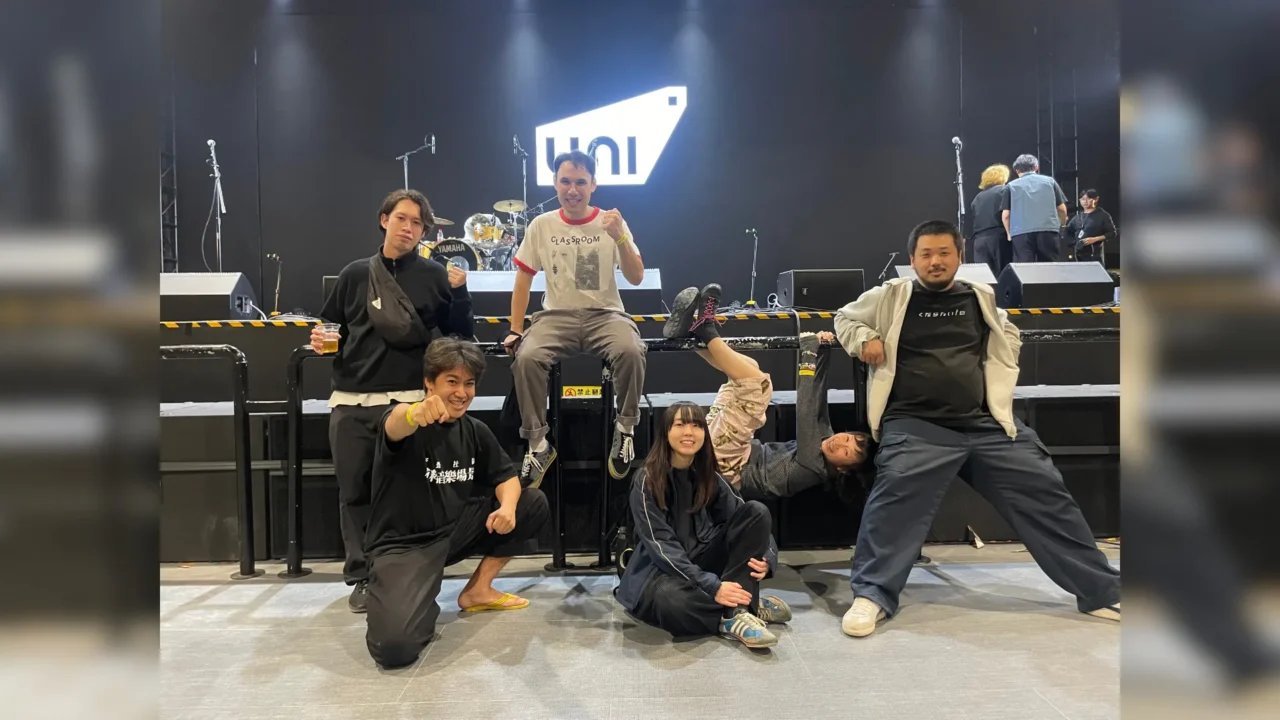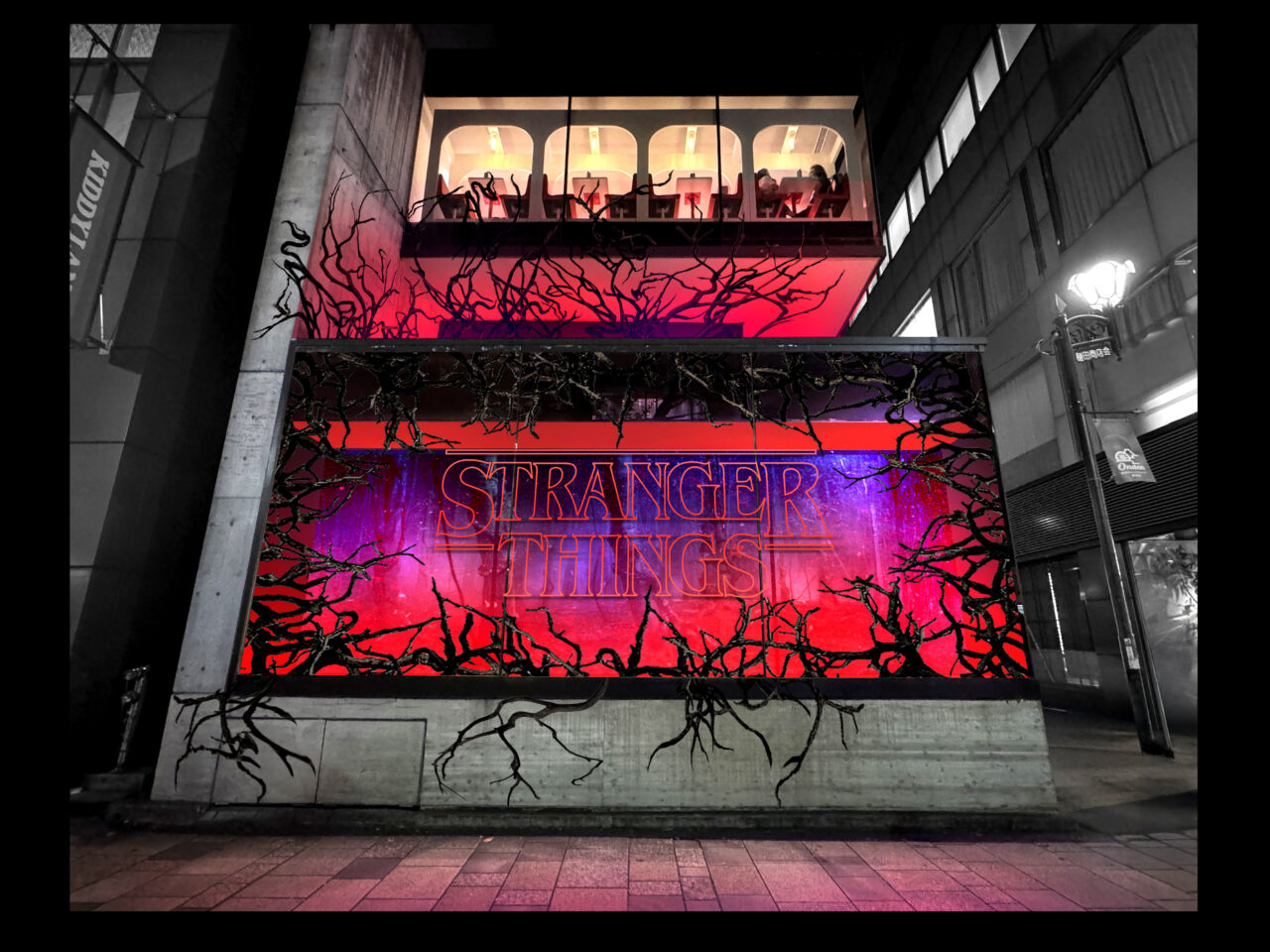The footwear brand “grounds,” with its impressive decorative outsole, has established a firm position in the Japanese fashion scene. The shoes used to be for subculture youth until a few years ago, and now even mode lovers are following the trend.
The man behind this project is Mikio Sakabe, who graduated first in fashion from the Antwerp Royal Academy of Fine Arts, and has been involved in the management of MIKIOSAKABE and the fashion school coconogacco, and has left various impacts on the Japanese fashion industry over the past decade. He is well respected in the industry for his ability to comfortably circumvent the existing fashion system in Japan, and to use his rich creative abilities trained in Antwerp in a multitude of fields. We asked him about the identity of grounds from various angles.
INDEX
Beyond “face” fashion: shoes that elevate the human form from the ground up
-How would you describe grounds? Please tell us about how the brand came this far.
Sakabe: grounds is a footwear brand symbolized by its distinctive outsole. Four years have passed since its establishment, and I feel that it is growing steadily despite its ups and downs.
-How did you come to launch another shoe brand when you already own fashion brand, MIKIOSAKABE?
Sakabe: In recent years, clothes were definitely designed around the head, undoubtedly based on the idea that “intelligence is important,” as in shirts and jackets made to draw the eye to the face.

Born in 1976, MIKIO SAKABE is a fashion designer and designer. In 2007-08, his eponymous fashion brand MIKIO SAKABE debuted at the Paris Collections for the fall/winter season in a presentation format, and in 2019, he established a brand specializing in footwear, GROUNDS. In 2019, he founded grounds, a brand specializing in footwear.
Sakabe: However, fashion is something that reflects the fresh air of the times, considering the relationship between humans and society. In this regard, we felt that we needed to propose a “new image of human beings” for the next era. So I was looking for a different approach, and I realized that if the shoes were distinctive, people would look at the whole body and see it in a different way than before.
-I see, so the next step was to focus on the feet.
Sakabe: Yes. We thought that we could propose a new image of human beings by thinking from the feet, rather than focusing on the head and face. grounds is a brand that literally thinks of design from the feet of humans, who are grounded to the earth, and we are developing designs that appear to be the basis of styling.
It is also interesting to note that shoes are approached differently from clothing, having architectural elements and being the farthest from the face and the most important product in the relationship between the earth and people.
-How did you come up with those ideas in the first place?
Sakabe: It often starts with dissatisfaction with the current situation or existing products. For example, sneakers have evolved with an emphasis on functionality, such as ease of movement and lightness, but that alone is boring. What if fashion was added to that? We incorporate such ideas into our designs.
INDEX
Identity forged through “relationships“
-What was the concept for the initial model, and what was it like?
Sakabe: The concept of “grounds” is to “change the relationship between humans and the earth (gravity). The outsole (the part of the sole), which is the most important part that embodies this concept, has its own name, the oldest being “INTERSTELLAR” and “JEWELRY. The clear color and tall shape of the outsole is also used in other later designs, and is still a core part of the shoe.
-Why did you focus on such features?
Sakabe: When I thought about recreating the relationship between humans and the earth (gravity), the first thing that came to mind was to have a “floating” feeling. To achieve this, we added thickness to the outsole in order to lift the foot off the ground, which is always touched with the ground. Then, to avoid making the shoes too heavy, we used a clear light material.
-Any difficulties in the actual manufacturing of the shoes?
Sakabe: When started, it was difficult to find a manufacturing factory. I used to make clothes, but I knew nothing about the shoemaking process. Sneakers, in particular, are a special field, and there were no factories that we could ask to work with because their business partners such as NIKE and adidas had rules about not leaking their technology to other brands. We searched and searched, and finally found a factory in Indonesia that we are still working with today.
-Is there anything that is important to you in the production of grounds items?
Sakabe: The design of grounds is basically neutral, and we plan and manage it as a team. My role is to check the items that are released each season closely, but the team takes the lead in the new items that are released every week, and I rarely have any say in the details.
-What do you pay attention to when designing as a team?
Sakabe: Sharing the same value. If there is an environment where we can share the mood and values that form the basis of the design, it is possible to develop a product from 1 to 100 within the team. Also, if you have a good balance of designers with different tastes on the team, so that the overall atmosphere is in various directions, you can naturally create interesting products.
-So you value relationships in the production process as well?
Sakabe: That’s right. In terms of presentation, at grounds, we don’t show the shoes as individual items, but rather emphasize the relationships within the collection, such as the gradation of colors and the unevenness when the shoes are placed side by side. I want customers to choose what they like among them.

INDEX
Creative clues unearthed in the realm of amateurism
-You collaborate frequently with artists and idols. Any reasons for it?
Sakabe: Yes. In the past, we have collaborated with idols such as former Nogizaka member Marika Ito, former Deppagumi.inc member Moga Mogami, and former AKB48 member Haruka Shimazaki. Japanese idols are characterized by unfinished elements such as “immaturity” and “amateurism,” which leads to the passion of the idols themselves and their fans. I find this fascinating and interesting.
-I see. It is similar to Japan’s “kawaii” culture, isn’t it?
Sakabe: While the value of European fashion is in “professionalism,” the aforementioned imbalance of “amateurism” and “immaturity,” as well as cultural and artistic elements are also included in Japan’s “kawaii,” which for me is a hint for fashion design. It is a hint for me in fashion design.
-It is interesting that you focus on “amateur” rather than “professionalism.”
Sakabe: The fun of creation lies in how much energy you can exert with what there is, rather than the knowledge and experience. Also, even if you come up with an idea, the more steps it takes to complete, the less pure it becomes. In maintaining purity, you do not have to be a professional. Otherwise, only people with money can become creators. This is directly related to the “amateurism” contained in the aforementioned “cuteness”.
-That’s what makes grounds stands out.
Sakabe: Maybe. I originally wanted to create something that fused fashion with something “hot” rather than something in the middle of fashion. grounds also has a strong individuality as a product, which I thik is why it has caught the eye of many people and is spreading.

INDEX
A rising global sensation, embraced by NewJeans and beyond
-How many types of shoes have you released to date?
Sakabe: In total, we must have produced more than 600 kinds of shoes. We drop a new collection every week, and also develop a collection every season, so it’s quite a large number. We also get quite a few requests to re-release old designs.

-Have there been any shifts in the customer base in the last four years?
Sakabe: At first, we started out with MIKIOSAKABE customers and the Harajuku area. From there, the shoes themselves stood out, so word of mouth spread rapidly among the customers who purchased them. Recently, the range of customers has gradually expanded, and they seem to be enjoying the various styling options. Sneakers have become a part of the collections of people who like sneakers, and recently we have seen an increase in the number of men’s customers and customers from overseas.
-Any particular countries where your products are popular?
Sakabe: We are expanding our business evenly throughout the world, including Asia, Europe, and the U.S. The largest number of customers is in China, followed by the U.S.
-Do you see any difference in the way people wear grounds between Japan and other countries?
Sakabe: I recently went to the U.S. for a look shoot, and I found the way some people wear them to be quite attractive. It was interesting to see the difference in interpretation of street culture between Japan and America.
-Could you give an exapmple?
Sakabe: They had a street style, wearing brand clothes but with ground shoes. The point was to mix and match luxury brands with grounds. There are still very few sneakers that explore fashion interest in terms of design, so they seem to be interesting in that respect. We have even had musicians wear them on the red carpet. The initial Japanese fans and the overseas customers are different in a good way, which is interesting.
-Yes, I have seen celebrities and K-POP groups wearing it recently.
Sakabe: Yes, right after NewJeans wore them in their music video, fans were quick to respond, and we received inquiries via Instagram DMs. But what’s interesting is that it’s not so much that there’s a huge response because a celebrity wore them, but that’s one of the characteristics of “grounds.
-So, communication is very much brand-driven.
Sakabe: That’s right. Up until now, we have mainly communicated online through Instagram and e-commerce, but this September we opened our first directly managed store in Harajuku. I hope to make new proposals here by linking well with the virtual world.
























